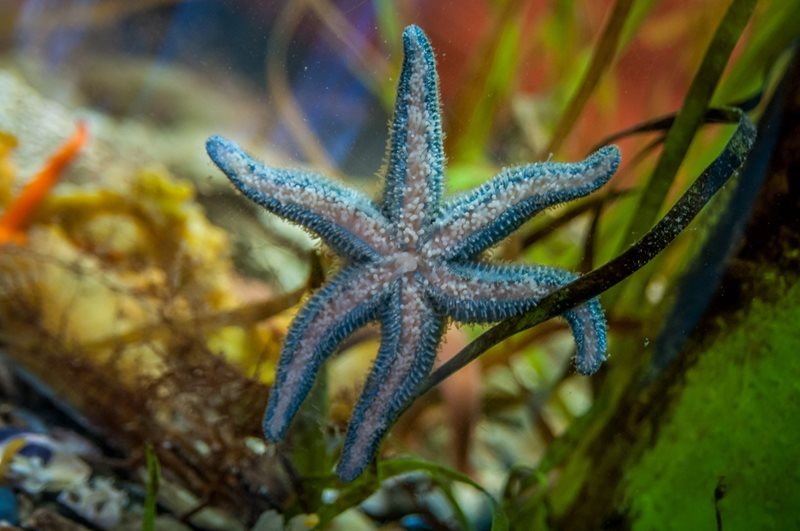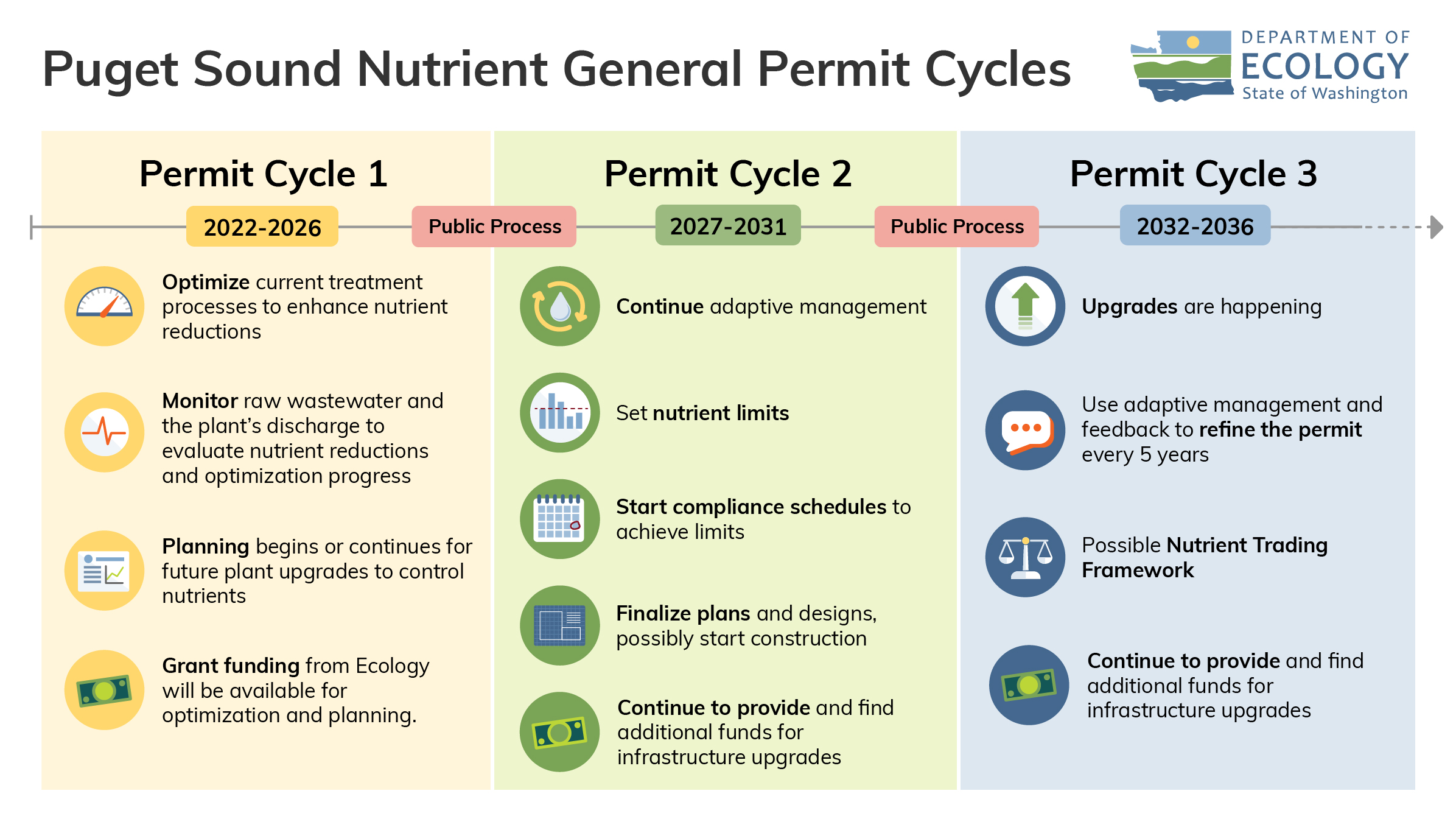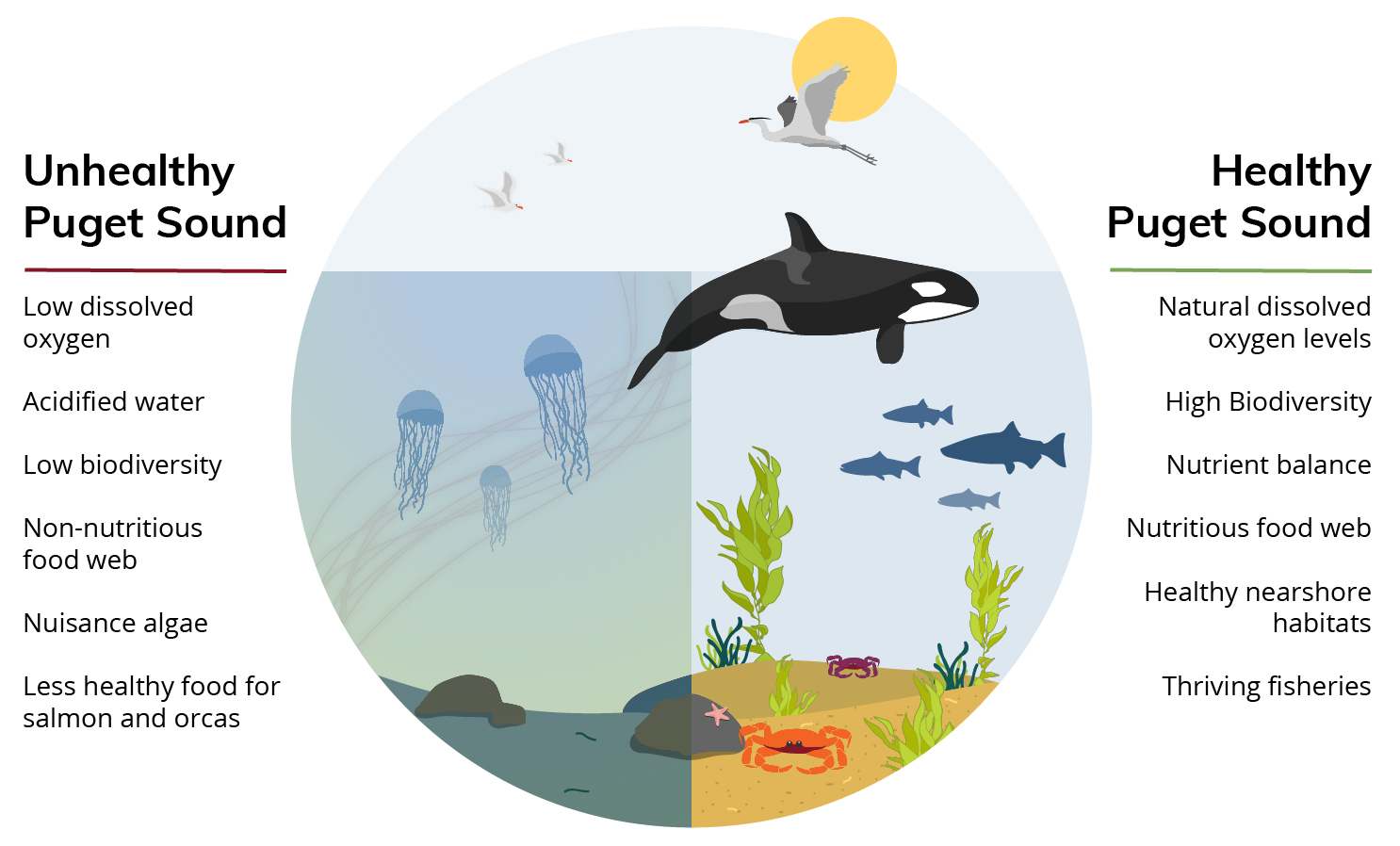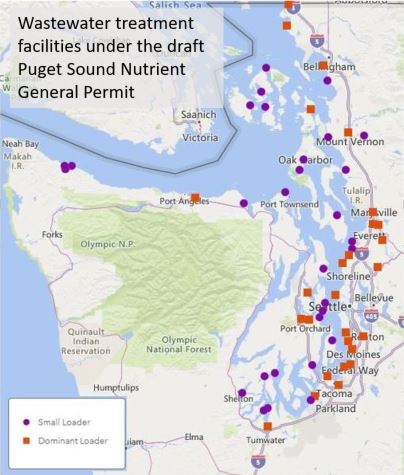
Upgrading wastewater treatment technology will lead to a healthy, vibrant Puget Sound.
Today, Ecology announced a major milestone in its ongoing efforts to restore Puget Sound — the new Puget Sound Nutrient General Permit.
This permit will lead to real, tangible improvements at wastewater treatment plants, and provide a cleaner, healthier environment for salmon and orca.
“Puget Sound communities rely on a healthy ecosystem. We need strong salmon runs and thriving orca pods. Without this permit, we’ll be on a fast track to dead zones,” said Vince McGowan, Ecology’s Water Quality Program Manager.
As the region continues to grow rapidly, it is causing an overwhelming amount of nutrient pollution to flow directly into Puget Sound. The pollution causes a domino effect in the ecosystem, threatening the entire foodweb. It reduces the amount of oxygen in the water, and fish need oxygen to survive. Fish and other marine life are struggling because most wastewater treatment plants currently do not have the technology in place to remove excess nutrients.
The natural flow in Puget Sound means excess nutrients largely stay in the Sound, instead of flushing out to the ocean. Too much nitrogen is creating a chain reaction of negative consequences.
Luckily, we have the opportunity now to take action and create a better future for Puget Sound by planning for and investing in wastewater treatment technology.
Using the best available science, including the Salish Sea Model, which predicts how nutrients move around Puget Sound, we know that when wastewater treatment plants start using nutrient removal technology, the health of Puget Sound will improve.
While multiple sources contribute to nutrient pollution, municipal wastewater treatment plants are the single biggest source by a very large margin. The 58 facilities that will fall under the permit contribute 70 percent of the excess nutrients that are causing problems in Puget Sound. Of those, 27 facilities contribute 99 percent of the nutrient load. These facilities, and the communities they serve, need to act now to reduce nutrient pollution.
Some wastewater treatment plants are more than half a century old and were not designed to remove nutrients. The biggest facility in Puget Sound, King County’s West Point Treatment Plant, contributes more than 18,000 pounds of nitrogen a day. Smaller facilities contribute less than one pound a day. It is clear which communities and facilities have the greatest opportunity to make the biggest reductions in nutrient pollution.
“The most important action municipalities can take is investing in and upgrading wastewater treatment technology,” McGowan said.
The Puget Sound Nutrient General Permit is the right action to begin solving this problem. To develop the permit, we combined the best available science with a thoughtful, inclusive stakeholder process. The permit sets a reasonable pace for communities to plan and invest in their wastewater treatment facilities, and ensures the problem doesn’t get worse in the near term.
Once established, we will update the permit every 5 years, with public input. We are sharing information on what we expect to include in future permit cycles, to help communities plan.
While we need to see real changes quickly, we also recognize that wastewater treatment plants in Puget Sound serve communities that vary greatly in size and resources. We are proposing requirements that will protect overburdened communities from increased sewer rates while also providing them with high-quality wastewater treatment.
Communities can take action now. Local governments can optimize their existing treatment facilities and plan for upgrades and investments that tackle this pollution problem. The tools and technologies exist.
"We know this will work because there are communities in Puget Sound that have led the way. They have successfully planned and invested in the right technologies to reduce nutrient pollution. Now we need investments across the region,” McGowan said.
Our goal is a healthy Puget Sound. By restoring the nutrient balance, the entire ecosystem will thrive for years to come.
The permit is critical for the health of the Puget Sound ecosystem, for restoring salmon and orca populations, and for supporting all communities who need a healthy Puget Sound to live and work.
“Dead zones don’t have to be the future of Puget Sound. We can stop nutrient pollution. If we act now, we can turn the tides. It’s not too late. We can have a thriving Puget Sound for generations to come,” McGowan said.
Comment on the permit
The 58 facilities under this permit are home to diverse communities and we want to hear from the people in these communities as we move forward with the permit. Please read through the materials and consider attending one of our public meetings this July. Nutrient pollution is a big problem for Puget Sound, but together we can make the right investments and solve the problem.
If you'd like to find the municipal wastewater treatment plant in your area, we have an interactive map of the facilities that are part of the permit. View our web map for more information.





